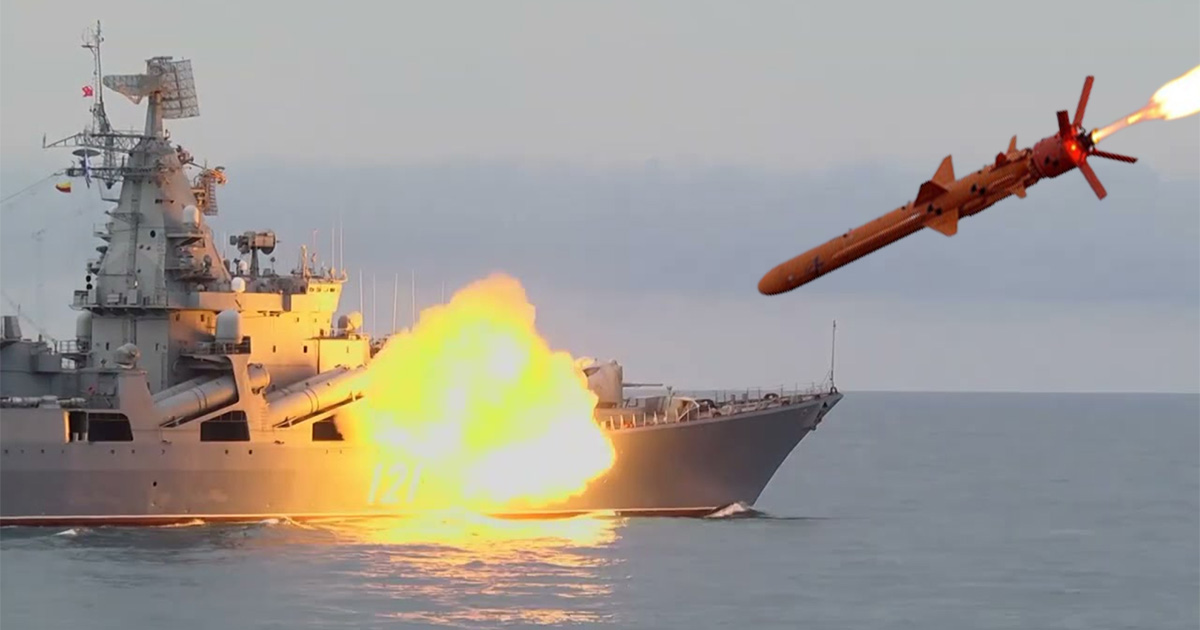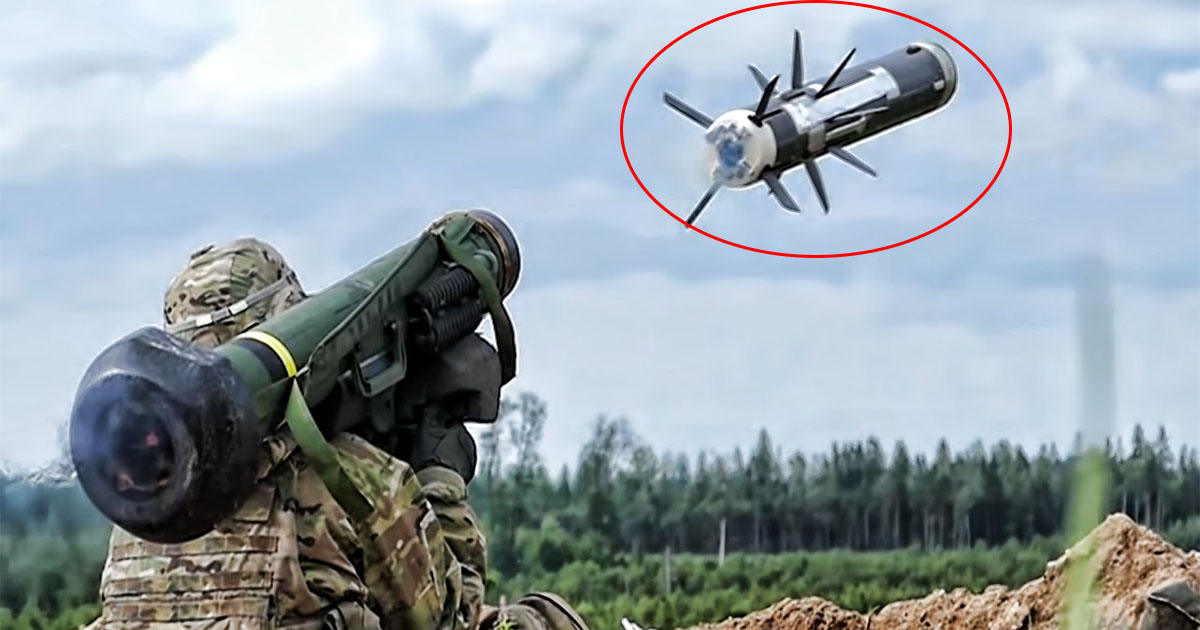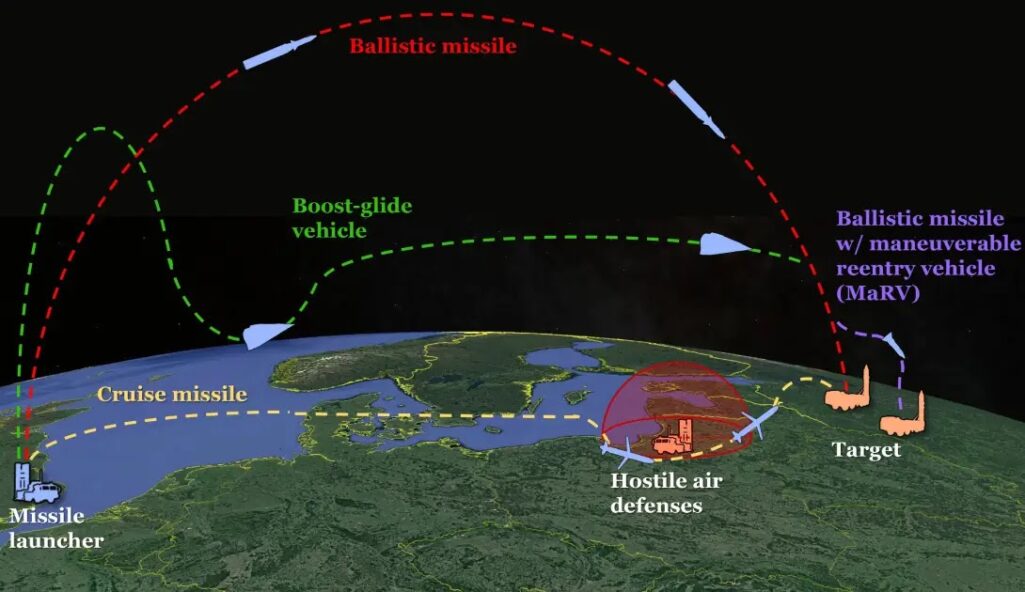
Some missile technologies may be new to you, or you may not understand why they’re remarkable. It’s time to explore more about this revolutionary weapons technology that is under development by multiple countries. Recently we started to hear more about hypersonic missiles.
Many questions come to our minds what are these missiles, what are their advantages over cruise and ballistic ones? which countries are leading in these types of technology. What could it do for commercial and military purposes? I will answer all these questions and more in this in-depth article. Let’s dive into hypersonic Missiles.
What is Hypersonic?
The definition of hypersonic is pretty obvious; hyper means beyond, and sonic is the sound speed, which means beyond the speed of sound. The sound speed is 767mile/hour. Hypersonic missiles are at least 5 times the speed of sound, which is notable. If you’re traveling at a hypersonic speed, you’re going more than a mile per second.
Hypersonic weapons are defined as anything traveling beyond Mach 5, or five times faster than the speed of sound.
Supersonic Vs. Hypersonic (Beyond Sonic Generations)
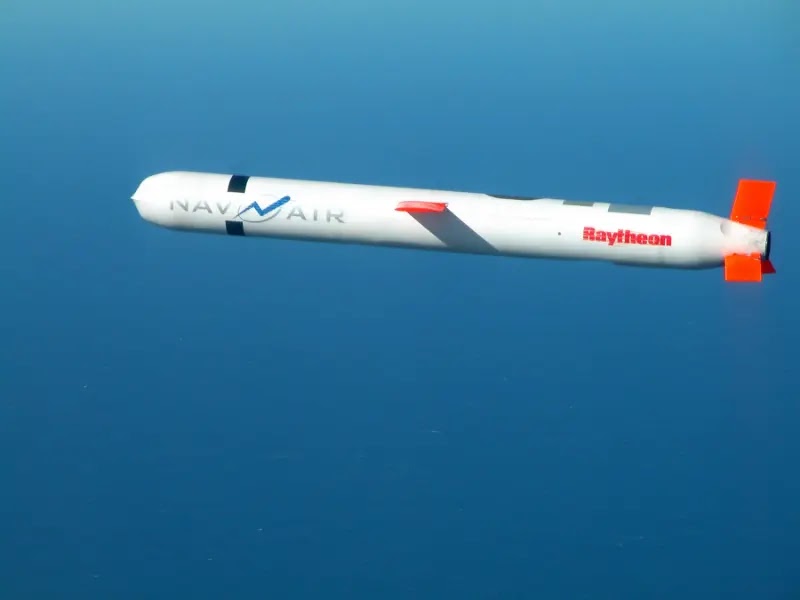
- Supersonic: It indicates traveling faster than the speed of sound between Mach 1.2 and Mach 5.
- Hypersonic: It means Super Super-Sonic! Hypersonic missiles travel five times the speed of sound and above (Mach 5 +).
For reference, typical commercial airplanes are subsonic, traveling slower than the speed of sound, which is 760 mph. When you go faster than that, you’re traveling at supersonic speed.
Military jet usually flies at supersonic speed. The fastest military jet, The Russian MiG-25 fighter (NATO code name ‘Foxbat’). Radar has spotted the reconnaissance ‘Foxbat-B’ at Mach 3.2
History of Hypersonic Speed
In late 1930, Austrian engineer Eugen Sänger and German scientist Irene Bredt designed a hypersonic glider, The Silbervogel, but it was never built.
In 1949, the two-stage Bumper rocket, built from a captured German V-2 (fitted with a WAC corporal sounding rocket), briefly reached hypersonic speed during return before breaking up.
Yuri Gagarin became the first human to attain hypersonic speed. In 1961, two additional members, Alan Shepherd and Robert White, joined the hypersonic club within a year during his historic orbital flight. However, they flew at hypersonic speeds for only a few seconds. The US government granted Boeing the design contract for the Dyna-Soar hypersonic glider in 1959, and Hypersonic flying research persisted, although it proved technically difficult.
Cruise vs. ballistic Vs. Hypersonic
Cruise missiles are quite precise, but they have the disadvantage of being slow. On the other hand, ballistic missiles are extremely rapid, but they aren’t accurate because they can’t change their direction after launching.
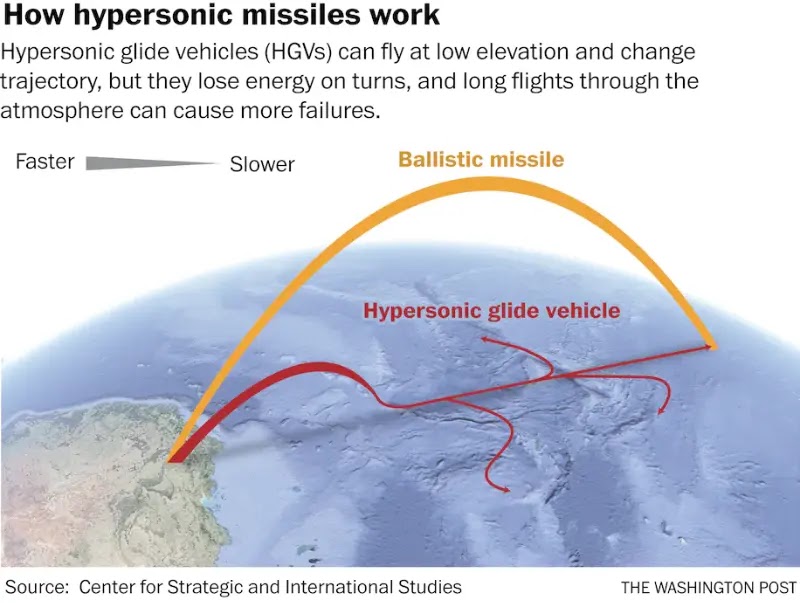
Conventional intercontinental ballistic missiles can reach hypersonic speeds, but they have a predictable parabolic trajectory that makes them easier to monitor and intercept. On the other hand, Hypersonic missiles approach very quickly at low altitudes, making them far more difficult to detect and knock down, according to the Congressional Research Service.
Here comes the Hypersonic.
What are the types of hypersonic weapons?
Hypersonic weapons come in three varieties, one old and two new:
Hypersonic aeroballistic missiles are launched from the air and maneuverable enough to follow ballistic flight patterns. In the 1970s and 1980s, this technology was created.
(HGV) or Hypersonic glide vehicles are launched high into the sky, similar to intercontinental ballistic missiles, but fall to a lower, flatter trajectory. They glide and dive as they approach their targets, adjusting their speed and trajectory.
(HCMs) or Hypersonic cruise missiles operate at multiple times the speed of sound because of modern supersonic combusting ramjet technology. They then function similarly to classic cruise missiles, although with more maneuverability.
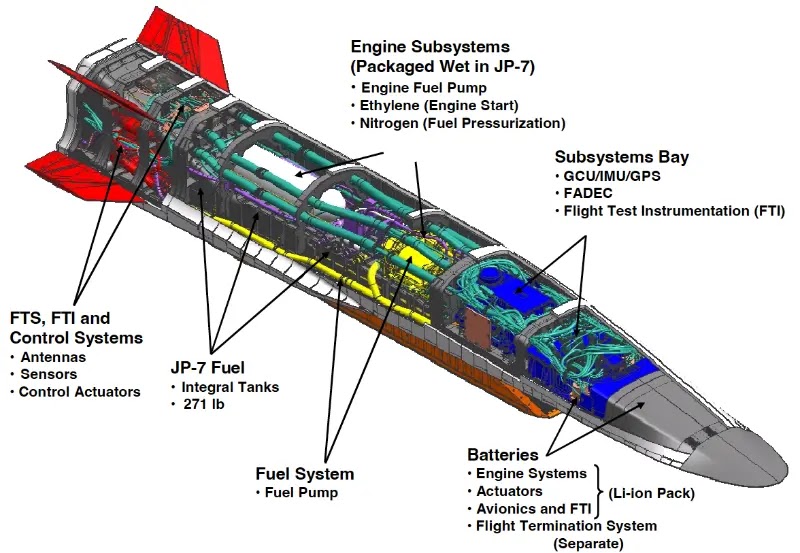 |
| A cutaway diagram of the X-51A’s subsystems. |
Hypersonic technology challenges
Managing air drag is critical for developing hypersonic weapons. The weapon’s speed causes it to encounter resistance. Drag slows the weapon, which is troublesome with gliders because they lack engines.
Drag raises the temperature of the aircraft and the surrounding air. Hypersonic heating can ionize and chemically react to the surrounding air. Degradation of the weapon’s surface.
A shock wave is created when an item travels faster than the speed of sound. The shock wave virtually hugs the weapon at hypersonic speeds, driving the hot, chemically unstable air into close contact with the weapon’s surface. These issues jeopardize the weapon’s integrity, making hypersonic missile design difficult.
Which countries have hypersonic technology?
Developing Hypersonic weaponry technology is so challenging:
North Korea tested two hypersonic missile tests in January, which were reported to be successful.
China’s Hypersonic glide vehicle HGV test in 2021 circled the globe before accelerating towards its target, revealing a superior space capability that surprised US intelligence.
United States: The US has shown increasing interest in pursuing the development and near-term deployment of hypersonic systems as China and Russia accelerate their work on hypersonic missiles.
Pentagon urges Chiefs of biggest defense companies to hurry hypersonic weapons development as The united states lag behind China. The United States tested a hypersonic missile in mid-March but kept it hidden to avoid worsening relations with Russia.
India: In September, India conducted a hypersonic weapon test developed in-house. Collaborating with Russia, it also develops the BrahMos II hypersonic cruise missile.
Russia: Russia is one of the few countries that has tested hypersonic missiles and is the only country that has used this missile in combat. Russia owns several hypersonic missiles, such as the Kinzhal, Tsirkon, and Avangard.
Russian missiles, such as the 3M22 Zircon, can travel at nine times the speed of sound and overcome anti-missile defenses.
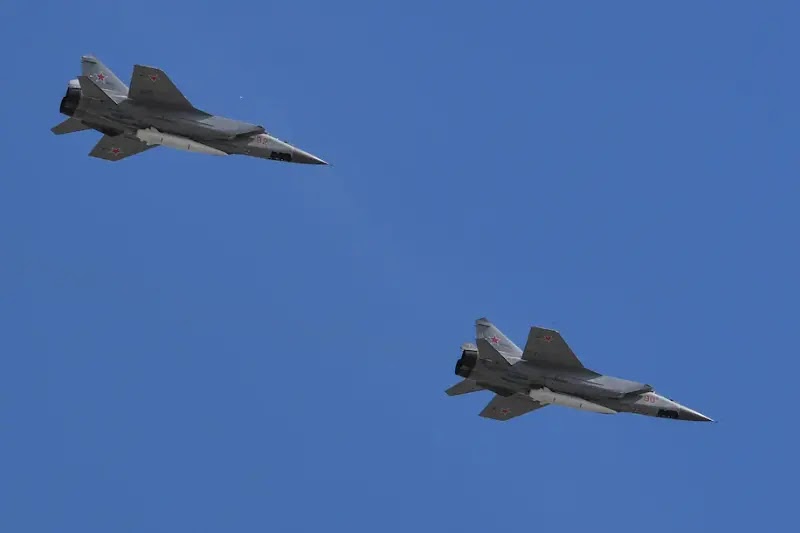
United Kingdom and Australia are collaborating with the united states to develop hypersonic missile systems, According to reports.
Can hypersonic missiles be intercepted?
Actually, no. A sophisticated missile defense system cannot keep up with the speed of the missiles. But why not? As missile technology evolves, so do anti-missile defense systems, but hypersonic missiles’ extraordinary speed allows them to sometimes escape even radars.
Hypersonic cruise missiles (HCMs) use jet engines to reach their targets, making them difficult to intercept.
The hypersonic glide vehicle (HGV) is the most difficult to detect since it utilizes a re-entry vehicle after launch. The missile is launched in an arching trajectory, where the warhead is fired and rapidly returns to Earth. Unlike conventional Intercontinental ballistic missiles, which rely on gravity to fall, hypersonic missiles have a glide vehicle that rides the shockwaves created by their lift when they break the sound barrier.
Its high speed allows it to avoid conventional missile defense systems. Experts think hypersonic weapons generate plasma bubbles and clouds. These bubbles absorb radio waves, making radar tracking and locking on difficult. latest reports show that the United States is able now to detect the hypersonic missile but still has no way to intercept them
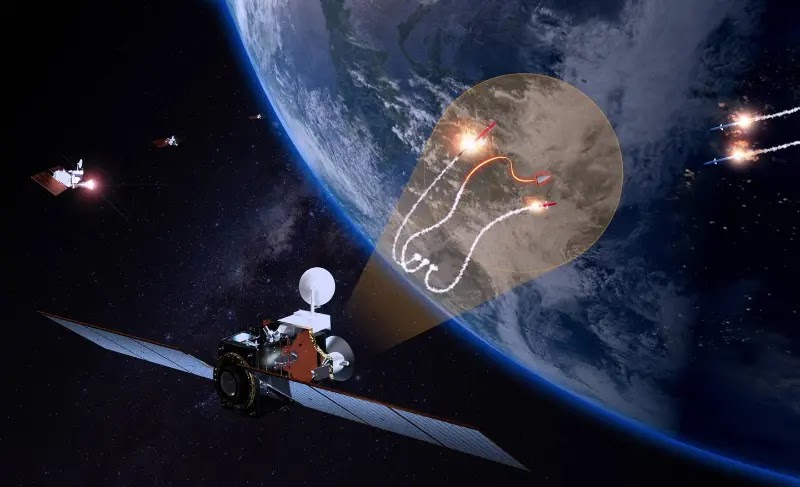
Conclusion:
Hypersonic missiles travel 5 times faster than the sound speed. It’s not a new technology, but recently, countries have been racing to develop it in its newest forms (HGV and HCM). Until today, few countries have this technology. Russia, China, North Korea, Unites States, India, Australia, Uk, and France are developing this technology, but only China, North Korea, Russia, and the US have successfully tested hypersonic cruise missiles. Until today there’s no way to intercept these types of missiles.



